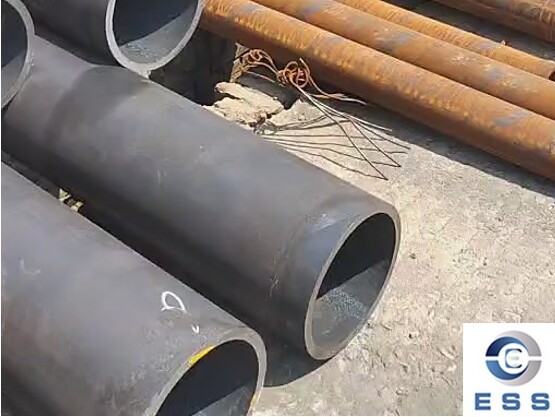
Under
the same conditions, carbon steel pipe transfers heat faster than stainless steel pipe. This is mainly due to the higher thermal conductivity of carbon
steel and the larger thermal resistance of stainless steel, which affects the
heat transfer efficiency of both.
Stainless
steel pipe is a steel pipe. Common stainless steel materials include: 304
stainless steel, 316 stainless steel. Stainless steel pipe has good corrosion
resistance and oxidation resistance and is widely used in chemical,
pharmaceutical, food and other fields.
Carbon
steel pipe is a steel pipe with a high carbon content. Common carbon steel
materials include: Q235 carbon steel, 20# seamless steel pipe. Carbon steel pipe has good mechanical properties and processing
properties and is widely used in construction, machinery, automobile and other
fields.
Physical
properties of stainless steel pipe and carbon steel pipe
Stainless
steel pipe is a steel pipe containing alloy elements such as chromium (Cr) and
nickel (Ni), which has high corrosion resistance and low thermal conductivity.
The
main components of carbon steel pipe are iron and alloy elements with high
carbon content. It has high thermal conductivity and low corrosion resistance,
and the cost is relatively low.
Heat
transfer performance of stainless steel pipes and carbon steel pipes
Heat
transfer is a basic concept in the field of thermodynamics, which refers to the
process of heat transfer from a high-temperature object to a low-temperature
object. The heat transfer performance of stainless steel pipes and carbon steel
pipes is mainly affected by thermal conductivity.
1.
Comparison of thermal conductivity
Thermal
conductivity indicates the ability of a material to transfer heat, and the unit
is W/(m·K). The following are the thermal conductivity
data of the two:
Stainless
steel pipe: about 15-20 W/(m·K)
Carbon
steel pipe: about 45-50 W/(m·K)
Numerically,
the thermal conductivity of carbon steel is 2-3 times that of stainless steel,
which means that under the same temperature difference conditions, carbon steel
pipes can transfer heat faster.
2.
Other factors affecting heat transfer efficiency
In
addition to thermal conductivity, the wall thickness will also affect the heat
transfer efficiency of the pipeline:
The
thicker the wall thickness, the lower the heat transfer efficiency. Thicker
pipe walls increase thermal resistance and reduce heat transfer rate. Due to
the low thermal conductivity of stainless steel pipes, the wall thickness has a
greater impact on heat transfer. Carbon steel pipes have high thermal
conductivity, so the wall thickness has relatively little effect.
Summary
Stainless
steel pipes and carbon steel pipes are both common pipes with their own
characteristics and application scenarios. In terms of heat transfer, carbon
steel pipes transfer heat faster, but stainless steel pipes are more suitable
for some occasions that require corrosion resistance and oxidation resistance.
When choosing a pipe, you need to make a comprehensive trade-off based on the
specific situation.
Read more: Roughness of carbon steel pipe













 Eastern Steel Manufacturing Co.,Ltd not only improve product production and sales services, but also provide additional value-added services. As long as you need, we can complete your specific needs together.
Eastern Steel Manufacturing Co.,Ltd not only improve product production and sales services, but also provide additional value-added services. As long as you need, we can complete your specific needs together.










